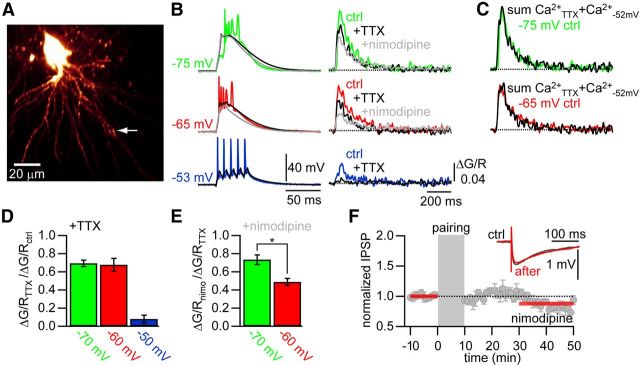Figure 5.
iLTP requires Ca2+ influx through L-type VDCCs. A, Two-photon image of a thalamocortical relay cell filled with Alexa-594. Arrow indicates imaging location used in B. B, Membrane potential traces (left) and the corresponding Ca2+ transients (right) for different membrane potentials and after consecutive bath application of TTX (black) and nimodipine (gray). C, Ca2+ transients evoked at −75 mV (green) and −65 mV (red) overlaid with the sum of the Ca2+ transients after bath application of TTX and the control Ca2+ transient evoked by tonic AP firing at −52 mV (black), indicating that the effect of TTX can be completely accounted for by the lack of AP evoked Ca2+ influx. D, Summary of the effect of TTX on the Ca2+ transients evoked from the different membrane potentials. E, Summary of the effect of subsequent bath application of nimodipine. * Significant difference (p < 0.05). F, Normalized and averaged IPSP amplitudes over time in the presence of nimodipine showing that iLTP requires L-type VDCCs. Gray bar indicates pairing period (Δt = 5 s). Inset, Representative averaged IPSPs during baseline (ctrl, black) and after pairing (after, red).

